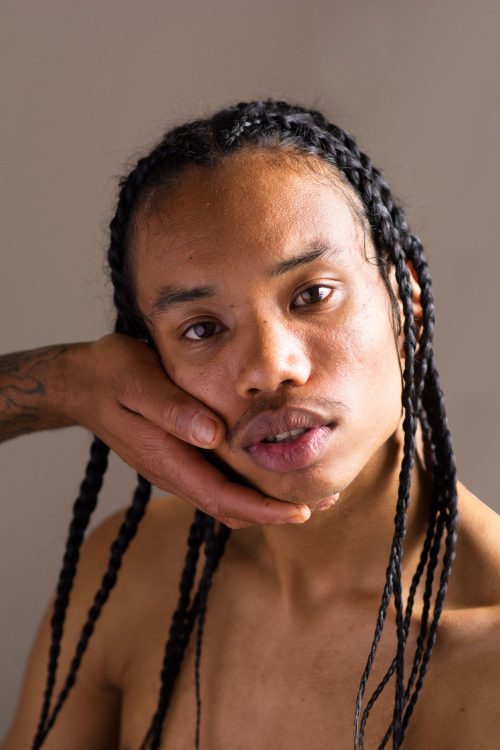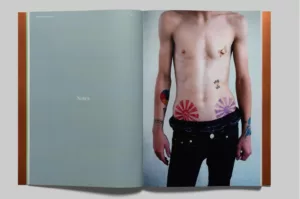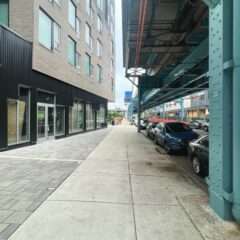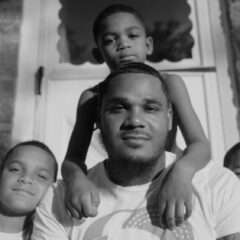
“Encounters with Whitman,” an exhibit of photographs and video at the Da Vinci Art Alliance (DVAA), 704 Catharine Street, offers a fitting visual tribute to the work of poet Walt Whitman.
The juried exhibit, featuring the work of twenty-four artists, is a collaboration between DVAA and Casa de Duende, a local arts organization committed to socially-conscious work. It will be on display through Sunday, June 16.
“Encounters with Whitman” comes at an opportune moment. This past May 31 marked the 200th anniversary of Walt Whitman’s birth and June also happens to be the 50th anniversary of the Stonewall riots. Whitman’s poetry—earthy, erotic, and frank regarding same-sex attraction—is an inspiration for later gay artists, including the Beat poet Allen Ginsberg and the experimental filmmaker James Broughton.
According to David Acosta, the president of DVAA’s board of directors, “Encounters with Whitman” dovetails nicely with the organization’s ongoing efforts to expand opportunities for LGBTQ+ artists. “Casa de Duende and DVAA have partnered over the past three years to create exhibitions in June that offer opportunities for both agencies to include the work of LGBTQ artists as part of the Pride Month observances,” he wrote via email.
The photographic portion of “Encounters with Whitman” emphasizes landscapes and portraiture. Whitman’s poetry often invokes the landscape, and he did call a collection of his prose “Democratic Vistas.” The author was also keenly interested in the relatively new medium. Regarding the many images made of him during his lifetime, the poet told his friends, “I find I often like the photographs better than the oils—they are perhaps mechanical, but they are honest.”
The submissions were reviewed and selected by two well-known local photographers: Stuart Rome, who started the photography program at Drexel University, and Paul Cava, who published a meditation on Whitman in his 2005 book, “Children of Adam from Leaves of Grass.” Among the 12 photographers whose work is on display are Mario Nascati, Eddy Rhenals-Narvaez, Jay Roth, Jennifer Brinton Robkin, Amanda Tinker, and Andrea Walls.
The photographs vary widely in tone and content yet still reflect Whitman’s expansive vision. That’s unsurprising given that the bard once proclaimed, “I am large, I contain multitudes.” Angelo Benedetto’s “Mildred Street,” a close-up of two row houses, draws viewers’ attention to abstract qualities like color and shape. (The façade of one house is avocado; the other purple.) Once viewers acclimate to the planes, rectangles, and vibrant hues, they might also notice a sign in one window that reads, “TRANS RIGHTS ARE HUMAN RIGHTS.”
In contrast, Geoffrey Agrons leaves urban life far behind in “The Myth of Sisyphus (Because This Is Where You Are).” The image, a palladium contact print, shows a small grove of trees in a rolling field of dry grasses. The trees appear slightly warped by the weather. Only the presence of a small outbuilding reveals how large they’ve managed to grow in an inhospitable environment. Similar imagery reappears in a photograph from Howard Brunner’s “Tree Work” series. The black-and-white image, an archival pigment ink jet print, shows one trunk, thick and healthy, jutting upwards, phallic-like, towards the right-hand side of the frame. Entwined around it are two slimmer, curved branches from another tree. Trees were a meaningful image in Whitman. In the moving poem, “I Saw in Louisiana A Live-Oak Growing,” the solitary tree reminds the poet of himself and also serves as a symbol of what he called “manly love.”
The portraits are equally wide-ranging. Nanci Hellmuth’s “Like it is,” a digital photograph, presents a close-up, black-and-white image of a young man’s face. Wisps of smoke, possibly from a cigarette, drift upwards from the bottom of the frame, mirroring the curve of his eyelashes and the whorls of hair brushed back from his forehead. As close as viewers are to the subject, there’s still a hint of distance.
In contrast, “Danny,” a colorful digital photograph by Marcus Branch, offers an intimate glimpse of tenderness. The shot is a close-up of what appears to be a young man of color, showing him from the shoulders up. He’s bare-chested, and his head is slightly tilted, leaning into the hand reaching towards him from the left-hand side of the frame. The youth’s almond-shaped eyes, full lips, and wispy mustache contrast with the firm, rough hand touching his right cheek.
The photographs on display offer plenty to contemplate, but attendees would be wrong to neglect the videos, 12 of which run a continuous loop lasting roughly 45 minutes. This portion of the exhibit is more explicitly homoerotic than the photographs. That was deliberate, according to Acosta. The call for video submissions, he explained, focused on a sequence of Whitman’s poems known as “Calamus,” his most explicit treatment of love between men. It was meant, Acosta continued, “to attract the responses of queer artists for whom the poetry spoke directly to their own queer desire and the need for the definition of queer communities and comrades as described by Whitman.”
Here, too, the work is diverse and surprising, varying according to the perspective of the artists. For example, “A Glimpse,” a brief black-and-white video by Menelas, an artist based in Athens, Greece, shows him in his apartment reading Whitman’s poignant poem of the same name. Juliana Romero Hillman’s video “Gallo,” in contrast, takes viewers into the wild. This colorful, somewhat surreal video, is shot from a kind of critter’s-eye-view. We get glimpses—through leaves of grass and tangles of branches—of a nude male figure, engaged in a primal dance. As the camera slowly climbs from his bare feet up to his torso, it reveals his head, bedecked with a rooster’s comb and beak. This image evokes the queerest, most pagan side of Whitman.
Attendees could, conceivably, devote their entire time just to watching the videos, which were judged by Stiofan O’Ceallaigh and Jose Luis Cortez. Among those being shown are pieces by Vincente Cortez, Xag Iria, and Julien Tomasello.
But just like reading Whitman’s expansive, free-verse poems, it’s best to immerse yourself in the entire exhibit.
The Da Vinci Art Alliance is open from Thursday through Sunday, 12:00 to 5:00 p.m. For more information, visit www.davinciartalliance.org.
Bio
Raymond Simon describes himself as a writer, editor, and denizen of Grub Street. He enjoys free jazz, hard-boiled crime fiction and intellectual history—but not necessarily in that order. You can follow Ray on Twitter at @raymondpsimon.









